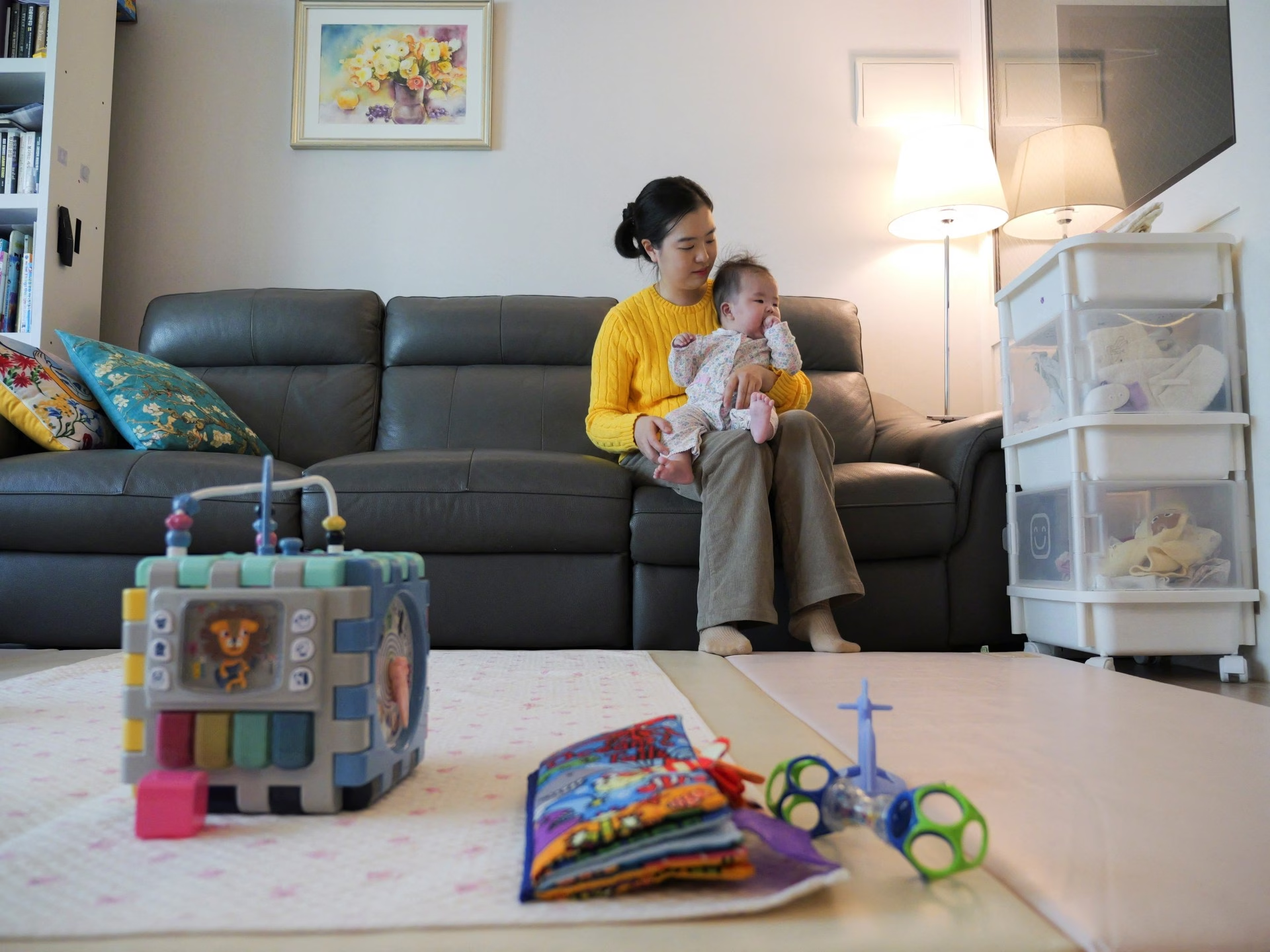The rise reflects an increase in marriages after the COVID pandemic as well as government policies taking effect.
South Korea’s birthrate, the lowest globally, saw an increase in 2024 for the first time in nine years, as policy efforts to incentivize companies and Koreans to embrace parenthood began to bear fruit.
Over the past decade, the country witnessed its birthrate sharply decline as women prioritized career advancement due to the rising costs of housing and raising children, setting the nation’s 51 million population on a path to potentially halve by the end of this century.
2024 marked a significant shift, with South Korea’s fertility rate rising to 0.75 children per woman from 0.72 in 2023, after a continuous eight-year decline from 1.24 in 2015. The crude birthrate — the number of babies per 1,000 people — increased to 4.7, halting a downward trend since 2014, according to Statistics Korea.
The increase in birthrate was influenced by a rise in marriages following pandemic-caused delays and government initiatives aimed at work-family balance, childcare, and housing.
“There has been a change in societal values, with more positive views on marriage and childbirth,” said Park Hyun-jung, an official at Statistics Korea, at a press briefing. She also noted the effect of an increase in the number of people in their early 30s and the delays caused by the pandemic.
“It is challenging to quantify how much each factor contributed to the rise in births, but these factors also had an impact on each other,” Park mentioned.
Former President Yoon Suk-yeol, now impeached, previously proposed creating a new ministry dedicated to addressing the “national demographic crisis”, aiming for a more comprehensive approach than the previously less effective, cash-focused support.
Policy changes include the full salary payment for a maximum of six months for parents taking leave, doubled from the previous three months. Furthermore, the maximum leave period has extended to one and a half years from one year for couples taking leave together.
Starting this year, the government mandates listed companies to include childcare-related statistics in regulatory filings, with incentives for projects and financial support for small and medium-sized enterprises.
The government has planned to spend 19.7 trillion won ($13.76 billion) in these focus areas this year, marking a 22 percent increase from 2024.
Over the past decade, the country witnessed its birthrate sharply decline as women prioritized career advancement due to the rising costs of housing and raising children, setting the nation’s 51 million population on a path to potentially halve by the end of this century.
2024 marked a significant shift, with South Korea’s fertility rate rising to 0.75 children per woman from 0.72 in 2023, after a continuous eight-year decline from 1.24 in 2015. The crude birthrate — the number of babies per 1,000 people — increased to 4.7, halting a downward trend since 2014, according to Statistics Korea.
The increase in birthrate was influenced by a rise in marriages following pandemic-caused delays and government initiatives aimed at work-family balance, childcare, and housing.
“There has been a change in societal values, with more positive views on marriage and childbirth,” said Park Hyun-jung, an official at Statistics Korea, at a press briefing. She also noted the effect of an increase in the number of people in their early 30s and the delays caused by the pandemic.
“It is challenging to quantify how much each factor contributed to the rise in births, but these factors also had an impact on each other,” Park mentioned.
Former President Yoon Suk-yeol, now impeached, previously proposed creating a new ministry dedicated to addressing the “national demographic crisis”, aiming for a more comprehensive approach than the previously less effective, cash-focused support.
Policy changes include the full salary payment for a maximum of six months for parents taking leave, doubled from the previous three months. Furthermore, the maximum leave period has extended to one and a half years from one year for couples taking leave together.
Starting this year, the government mandates listed companies to include childcare-related statistics in regulatory filings, with incentives for projects and financial support for small and medium-sized enterprises.
The government has planned to spend 19.7 trillion won ($13.76 billion) in these focus areas this year, marking a 22 percent increase from 2024.






